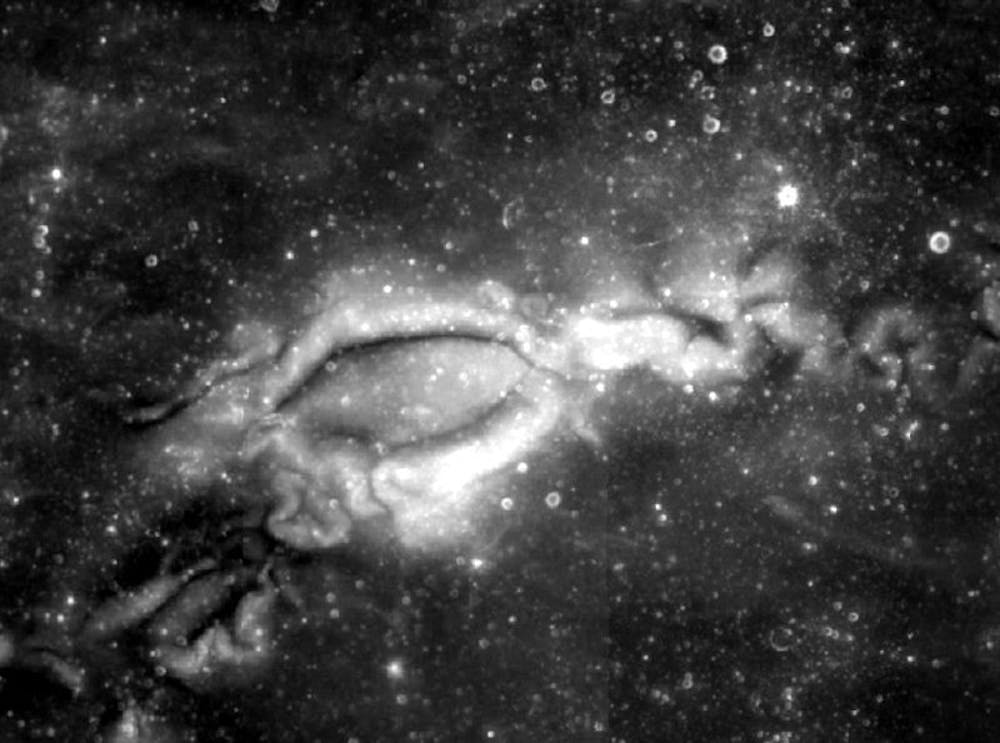Like a comforting presence, the moon is constantly circling above our heads and shining down on us when the sun sets, lighting up our night sky. But for an object that is always hovering near by, it has features that we are still unable to explain. Lunar swirls look like bright, beautiful clouds scattered across the moon’s surface, but why and how they got there was always a mystery.
Researchers at Rutgers University and the University of California, Berkeley (UC Berkeley) think they’ve cracked it: Lunar swirls are remnants of the moon’s geologically active core.
The longest and most famous lunar swirl is the Reiner Gamma, stretching about 65 kilometers. Visible from Earth, Reiner Gamma was first identified in the Renaissance era. Like other lunar swirls, Reiner Gamma is identified by an undulating area of low albedo, or high reflectance, appearing as brighter than the surrounding area to the naked eye.
Scientists have recognized for some time that lunar swirls are associated with areas of localized magnetic fields. These magnetic fields create a protective bubble around a small area, blocking particles of solar wind and slowing down the weathering of the lunar surface within the bubble. This results in the patterned high albedo.
“But the cause of those magnetic fields, and thus of the swirls themselves, had long been a mystery,” said Sonia Tikoo, co-author of the study, in a press release from Rutgers University. “To solve it, we had to find out what kind of geological feature could produce these magnetic fields — and why their magnetism is so powerful.”
Many heavenly bodies contain a magnetic field, namely planets. A complete planetary field is created by the interaction of liquid — molten lava — in the hot core of the planet with the rotation of the planet.
Earth has a magnetic field, which allows us to find north and south with a compass. The global magnetic field points out of the north pole, wraps southward around the planet, then enters through the south pole.
However, because the moon’s core has cooled and solidified, it no longer contains a strong enough magnetic field to produce the lunar swirls.
Even if it did, they would not be localized fields to create the patterns. But, billions of years ago, the moon did have a strong enough magnetic field to have formed the “lunar magnets” that created lunar swirls.
The researchers at Rutgers University and UC Berkeley used mathematical models to determine that the propagators of the magnetic fields, the lunar magnets, had to be narrow and close to the moon’s surface. This is consistent with lava tubes and dikes.
Lava tubes are formed by the flowing of magma away from a volcano; lava dikes are vertical injections of magma into the crust from the core. Both are indicative of geological activity and a molten core.
Cooling magma also “absorbs” the magnetic field it is in, becoming magnetized itself. This is especially prominent in rocks heated above 600 degrees Celsius and in an environment free of oxygen. At that temperature, minerals break down and release metallic iron, which adopts the surrounding magnetic field. On Earth, volcanoes don’t produce highly magnetized rocks since the oxygen in the atmosphere reacts with the iron and prevents in from becoming magnetic.
“No one had thought about this reaction in terms of explaining these unusually strong magnetic features on the moon. This was the final piece in the puzzle of understanding the magnetism that underlies these lunar swirls,” Tikoo said.
This knowledge is potentially important in the search for extraterrestrial life, since protection from solar wind and radiation is vital. Localized magnetic fields could mean heavenly bodies with a cooled core, and therefore no planetary magnetic field to protect from solar wind could have pockets of habitable surface.
Tikoo now works on a committee to develop a rover to visit these lunar swirls.





